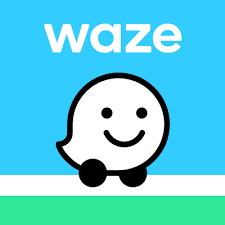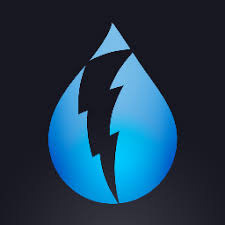Objective - To create a travel app that will help tourists navigate the South Asian landscape.
Market Opportunity - South Asia is a culturally diverse and complex region that draws numerous international tourists, who can benefit from an app that makes their trip more comfortable and enjoyable.
Target Audience - Foreigners visiting South Asia (Bangladesh, Bhutan, India, Maldives, Pakistan and Sri Lanka).
Features - (1) Driving directions; (2) Information about tourist destinations, restaurants, and hotels; (3) Chat with local experts; (4) User generated blog.
Context - Project completed for UX/UI course at CareerFoundry.
Role - Wrote project outline, designed app wireframes, created brand guidelines, gathered user feedback and finished app user interface design.


Competitive Analysis
The two apps chosen for the competitive analysis were Waze and Dark Sky.
Waze - Mobile app offering driving directions and traffic information. The app is used internationally and users contribute by posting information about traffic and accidents as they occur.
A key aspect of Waze’s strategy is the focus on citizen participation and offering data to cities to help them manage their streets better. This creates a level of engagement that sets the company apart from competitors. So, they proudly call themselves a “global community of over 115 million people.”
Waze targets the rushed and tech savvy commuter, without any obvious reference to age groups, income levels or gender. From the beginning, they have highlighted their ability to ease a commute by offering information that is often received from other commuters.
There are three key reasons that Waze enjoys a market advantage. First, it owns cutting edge technology, such as beacons in tunnels where GPS signals do not reach. Second, Waze has a high popularity rating in the app store and has received numerous customer testimonials, including from reputable sources like the port authority of New York City. Third, Waze facilitates citizen participation and creates a platform for users to help each other on the roads – this heightens customer engagement and loyalty.
Dark Sky - Mobile app predicting the weather in US, UK, and Ireland. The app became famous for accurate hyperlocal weather forecasts in the immediate to short term.
Dark Sky was featured among the best weather apps on multiple lists for both 2018 and 2019. In a Google search, using the keywords ‘weather prediction app’, Dark Sky was listed in the first page as a standalone service, while most other popular apps showed up as part of lists. This suggests that Dark Sky has carved a name for itself in the market. The app’s core advantages include hyperlocal prediction and a detailed user interface that is well designed.
Dark Sky markets to people who are particularly weather conscious and want immediate hyperlocal information about the weather. It is this psychographic segment rather than any demographic segment that they are targeting. Also, they are only available in three countries – United States, UK and Ireland.
The app is easy to use. Users can browse through the map of their region and get various kinds of information – such as precipitation, cloud cover, wind speed and temperature.
User Research
The research was conducted to test the hypothesis that:
Traveling in South Asia is a messy experience. So, travelers can benefit from an app that curates relevant travel information for them and creates a platform to network with other travelers.
Interviews were conducted with three respondents.
Main frustrations regarding traveling in South Asia were related to: Poor infrastructure; Lack of information unless there are local contacts; Constant need to bargain for prices.
Central goals while traveling in South Asia were: To immerse in the local culture and have a good time; Be comfortable yet not secluded in a hotel all the time; Know the local people but not get cheated by high prices or misinformation.
Two key findings from research were: (1) Need for local information; (2) Need for authentic reviews.
User Story 1: As a foreigner unfamiliar with South Asia, I need accurate information about how to get to a new destination, so that I don't waste time and money trying to find a place I want to visit.
Entry Point: Entry into 'find destination' section.
Success Criteria: Locate a destination on the map and get directions to reach the place.
User Flow:
1. User chooses 'find destination' section from home screen, after logging in.
2. User choose to either 'search for destination' or go to the 'stored destinations' section.
3. User either finds destination after searching or finds it from 'stored destinations' and maps directions.
User Story 2: As a busy traveler with limited time, I need someone to plan my days so that I don't have to waste my time creating an itinerary of things to do.
Entry Point: Entry into 'creating itinerary' section.
Success Criteria: Receive and accept an itinerary based on entered criteria.
User Flow:
1. User chooses 'create itinerary' section from home screen, after logging in.
2. User enters criteria that itinerary will be based on.
3. User receives multiple itineraries.
4. User either likes and saves one or more itineraries received or repeats process by entering a different criteria.
User Story 3: As a busy traveler with limited time, I need someone to suggest places to eat, so I don't have to waste time finding a restaurant.
Entry Point: Entry into 'places to eat' section.
Success Criteria: Choose a place to eat from among suggested choices.
User Flow:
1. User chooses 'places to eat' section from home screen, after logging in.
2. User enters criteria that eating suggestions will be based on.
3. User receives multiple suggestions.
4. User either likes and saves one or more suggestions received or repeats process by entering different criteria.
Low Fidelity Wireframes
User Test 1
Details - Monica, 25, married, Toronto, post-graduate degree, self employed counselor, food lover.
Usage goal - The app will help her plan travel and get reviews of local attractions.
Usage details -
(1) No major issues with login process. Suggested that some users could be unwilling to provide date of birth, so there could be an adulthood statement - "I am above 18" - with an "I agree" checkbox.
(2) No major issues with any feature. Suggested that the 'map' feature can be improved by adding a 'places nearby' feature that allows users to see nearby places when searching for a destination. Suggested that visual scales, for amount walking desired or budget, can be used to plan itineraries.
(3) No major issues navigating the 'places to eat' feature. Recommended that users be allowed to leave reviews about places they eat at. Suggested that the itinerary and food sections should be linked or even merged, so food options can be seen while planning an itinerary.
User Test 2
Details - Arvind, 30, bachelor, Toronto, engineer, tech enthusiast.
Usage goal - Travel app will help him explore travel options.
Usage details -
(1) No major issues with login process. Suggested that users could be asked to choose an age group, while logging in, as this data can be used for further analytics.
(2) No major issues with any feature. One concern with the 'map' feature is whether user would rather use Google maps and stay away from this app.
(3) No major issues navigating the 'itinerary' feature. Suggested that for creating longer itineraries, the user should enter the start and end points. Suggested that the itinerary could be presented as a map.
User Test 3
Details - Lisa, 32, married, Barrie, educator, travel enthusiast, loves water sports.
Usage goal - Travel app will help her travel more efficiently.
Usage details -
(1) No major issues with login process. Curious regarding why birthday is required to register for the app. Agreed that 'above 18 - agree' statement is a better option.
(2) No major issues understanding any feature. Slight misunderstanding about the itinerary feature, as it seemed to be providing an itinerary for the entire trip. Suggested that the 'find a place' feature should offer information about commuting options using public transport.
(3) No major issue navigating the 'local experts' feature. Suggested that call rates should be based on type of information required.
High Fidelity Wireframes
Typography and Color
What Went Well
-After starting user research, I immediately identified a need for a South Asia focused travel app.
-Respondents liked the app features and overall structure, so I did not need to make any major changes to the initial wireframes.
-For the user tests, I found respondents who have gone to South Asia for vacation/work from Canada, so they represent the actual target audience.
What Did Not Go Well
-I did not use appropriate UI kits till the last phase of designing, so it took much longer than it should have.
-My design skills were not good enough to create a portfolio ready app, so I had to make numerous changes based on feedback.
-I struggled to create mock-ups.
Areas of Improvement
-Use of UI kits.
-Knowledge of color theory.
-Creating mock-ups for multiple devices.